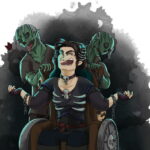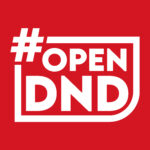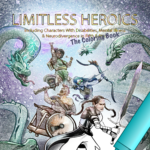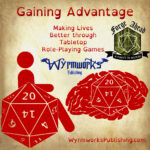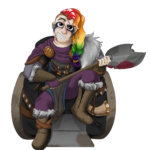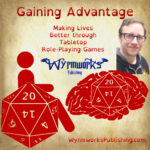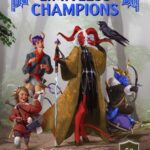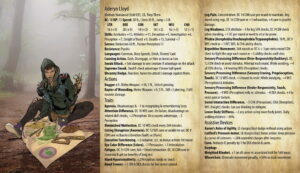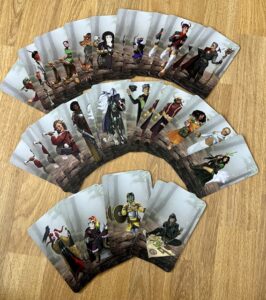What the New Barbie With Down Syndrome Can Teach Us About Inclusivity in TTRPGs
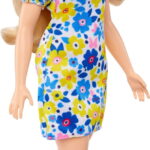
The new Barbie with Down syndrome and her impact
Mattel, the toy company behind Barbie, recently announced a new doll in their Barbie line with Down syndrome, added to a line that includes dolls with wheelchairs and one with a hearing aid.
As we see this gradual shift in representation in toys, we normalize disabilities in the lives of children. That way, we transform a “plastic” toy into a subtle tool to normalize people with disabilities in their lives, preventing othering and expanding their awareness and acceptance.
This new doll allows children with Down syndrome to play with toys that look like them and represent their experience, just as toys have added more racial and cultural representation in recent decades.
But this toy is for other kids, too, so the fantasy worlds they create in their pretend play includes disabled people as much as any others. And the more we get accurate and respectful portrayals in multiple forms of media, the more understanding, empathy, and acceptance will be mirrored in children’s play and their subsequent real-world interactions and relationships.
I’ve seen this impact in my own children. Because my work and passion lead to many conversations at home about disabilities and inclusion, and they love the service animals in Limitless Heroics, when we met a student at their school with a service dog, they reacted as they would to someone’s cool new backpack—they thought it was cool but not strange. When they encounter people in their lives with disabilities, they notice the differences and are sensitive to them, but they don’t think of them as “those people.” They are “my friends.”
What can we learn from Barbie about inclusivity in TTRPGs?
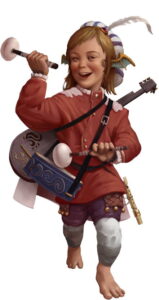
The new Barbie doll with Down syndrome has something to teach us about the importance of representation in TTRPGs. By demonstrating the importance of accuracy and inclusion of disabilities and other characteristics in our characters, Barbie provides an opportunity to continue a much-needed conversation about inclusivity within the realm of gaming.
- How can featuring characters with disabilities, such as Down syndrome, in a respectful and dignified manner enhance inclusivity in TTRPGs?
- What steps can game developers take to accurately reflect people with disabilities in stories and characters in TTRPGs?
- How can TTRPG players create diverse and inclusive gaming environments that accommodate everyone, including those with disabilities?
- How can we better listen to and consider feedback from players with disabilities in order to ensure inclusivity in all aspects of the game?
By learning from Barbie and paying attention to the importance of including diverse and accurate representations of disabilities, we can help create and foster more inclusive and respectful TTRPG communities.
3. Steps Ramps to Improvements in Representation in TTRPGs
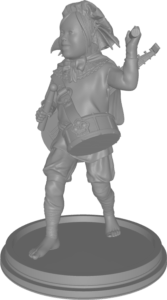
Although Barbie has taught us about the importance of representation in TTRPGs, there is still much work to be done when it comes to improving the game’s representation of those with disabilities. Here are some helpful movements to consider when trying to ensure that people with disabilities are properly represented in TTRPGs:
- Creating characters with disabilities that are complex and multi-dimensional.
- Making sure characters’ disabilities do not define them and limit them in any negative way.
- Ongoing conversations with willing players who have disabilities to help shape that representation in game rules and worldbuilding.
- Consider what accessibility looks like in your game world.
- Making sure players with disabilities have the resources and support they need, both physical and social.
- Considering how any special features, skills, equipment, or backstory related to a character’s disability impacts both the game and the players.
- Use artwork, props, and miniatures with disability representation.
What does a better future look like?
“You’re playing D&D? Who’s winning?” Has anyone ever asked you that? TTRPGs are uniquely cooperative. Properly played, everyone wins, because the success is more than loot or levels—it’s a welcoming environment and enjoyment for everyone. So imagine this box text describing the real world:
As you enter the room, you see a diverse group of adventurers gathered around a table, each with their own unique character sheets. One player, with a character that has a physical disability, shares their backstory with the group. The other players listen attentively and ask questions to better understand the character’s experience.
As they start to create their characters, the players encourage each other to consider incorporating diverse backgrounds and experiences. They work together to ensure that each character is balanced and equal in strength and credibility, regardless of any disabilities they may have.
As the quest unfolds, the players encounter a wide variety of NPCs, and some have disabilities as part of their larger descriptions and interactions.
Throughout their game, the players celebrate each other’s successes and work together to create solutions that benefit everyone. They make sure that all players, including those with disabilities, feel included and supported both in and out of the game.
As you watch, you realize that this group of adventurers has truly embraced the importance of inclusivity and diversity in TTRPGs. They have created a safe and welcoming environment where everyone can enjoy their adventures together.
